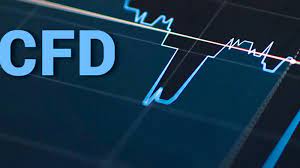When it comes to trading, there are countless options available in the market. One such option that traders can explore is Contracts for Difference (CFDs) trading. This form of trading allows traders to profit by anticipating price movements in a variety of markets. However, CFD trading is complex and requires proper knowledge, skills, and strategies. In this blog post, we’ll discuss the strategies of CFD trading that can help traders make a profit.
Hedging – Hedging is a way to mitigate losses by taking a position that offsets the risk of another position. In CFD trading, traders can hedge their position by opening a second trade that is in the opposite direction of their first trade. By doing so, traders can limit their losses or even make a profit, regardless of market movements. For example, if a trader has a long position on a stock, they can hedge their trade by opening a short position on the same stock.
Swing Trading – Swing trading is a strategy that involves holding positions for several days or weeks to profit from a market swing. In cfd trading, traders can use this strategy by identifying a trend and entering a trade in the direction of that trend. The trader can exit the trade when the trend starts to reverse. Swing traders aim to capture significant price movements and typically place larger trades to take advantage of the market trends.
Day Trading – Day trading is a strategy that involves opening and closing trades within the same day, with the aim to make quick profits. In CFD trading, day traders look for price movements in the market and enter trades accordingly. Day traders should use technical analysis to identify entry and exit points, and they should place strict stop-loss orders to limit their losses. By trading frequently within a single day, day traders can profit from small market movements.
Position Trading – Position trading is a long-term strategy that involves holding positions for weeks, months or even years. In CFD trading, position traders use this strategy to capture significant market trends and increase their profits. Position traders study fundamental analysis to identify market trends, and they should have a solid understanding of the markets they are trading in. Position trading is suitable for traders who have the patience to hold a position for an extended period.
News Trading – News trading is a strategy that involves entering trades based on economic news or events. In CFD trading, news traders monitor economic calendars and news releases to identify trading opportunities. For example, if a positive jobs report is released, a news trader may enter a long position on the stock market as the market is expected to rise following the news release. News trading is popular among traders who have experience in fundamental analysis and can react quickly to news releases.
Conclusion:
CFD trading is a complex and dynamic market that requires proper knowledge, skills, and strategies. Hedging, swing trading, day trading, position trading, and news trading are five common strategies that traders can use to profit from the market. It’s essential to understand that there is no one-size-fits-all strategy in CFD trading. Traders should tailor their strategies to their trading goals, risk appetite, and market conditions. Moreover, traders should practice proper risk management and discipline to avoid significant losses. By following the strategies mentioned above and adopting a disciplined approach, traders can increase their chances of success in CFD trading.



